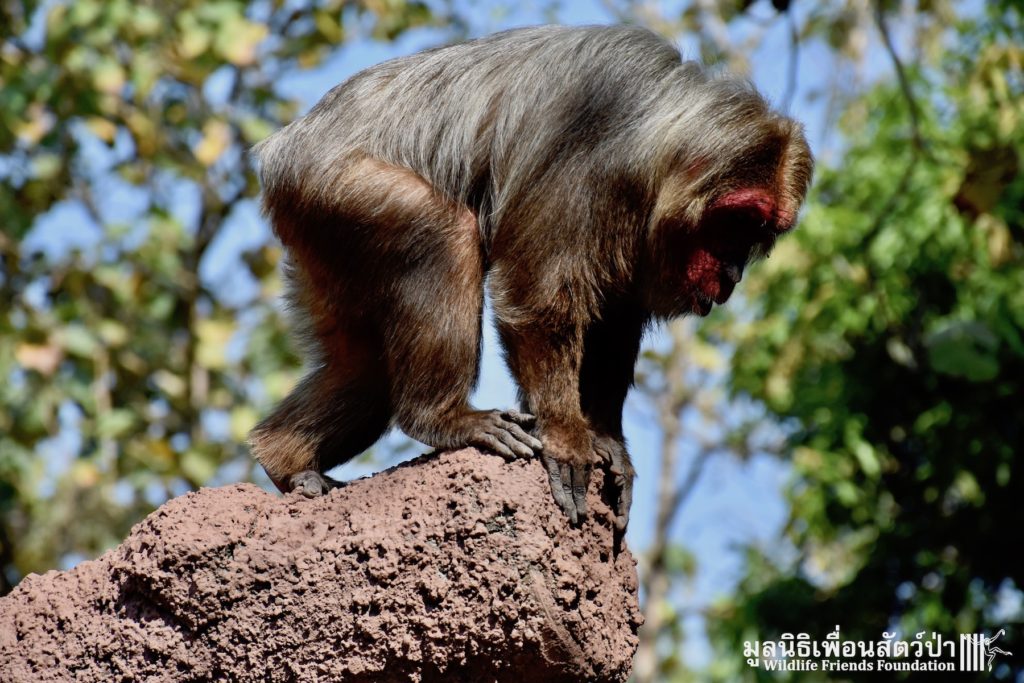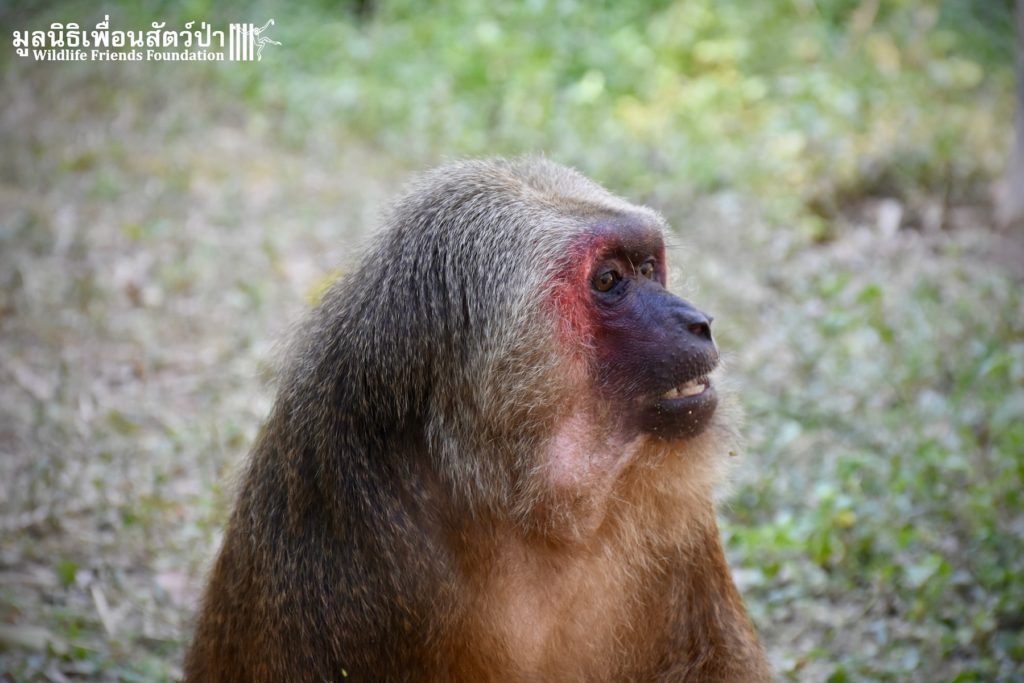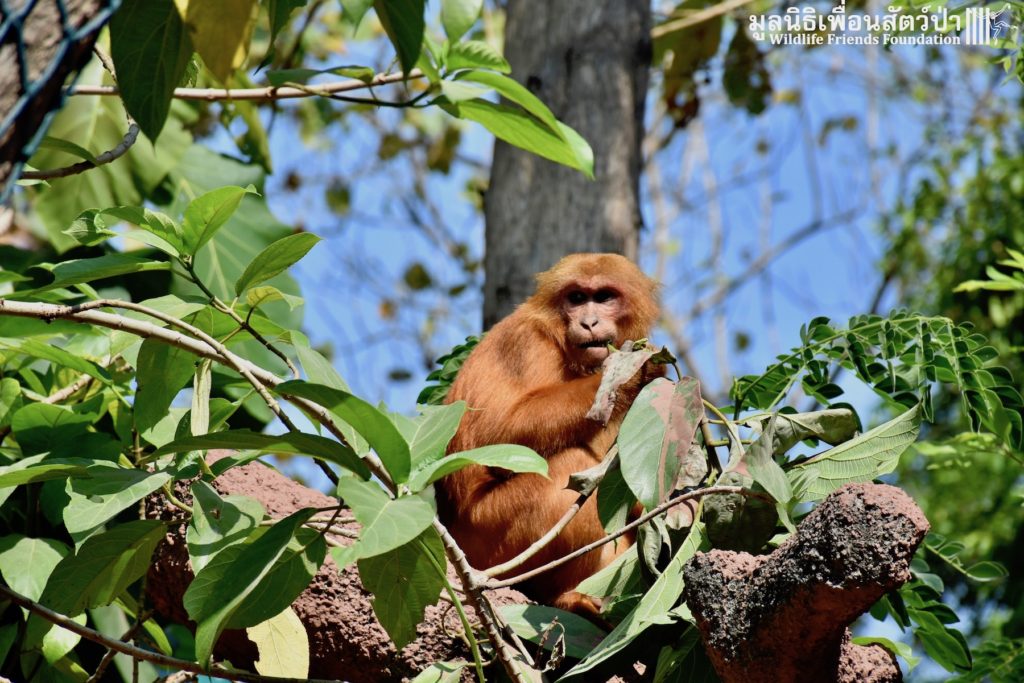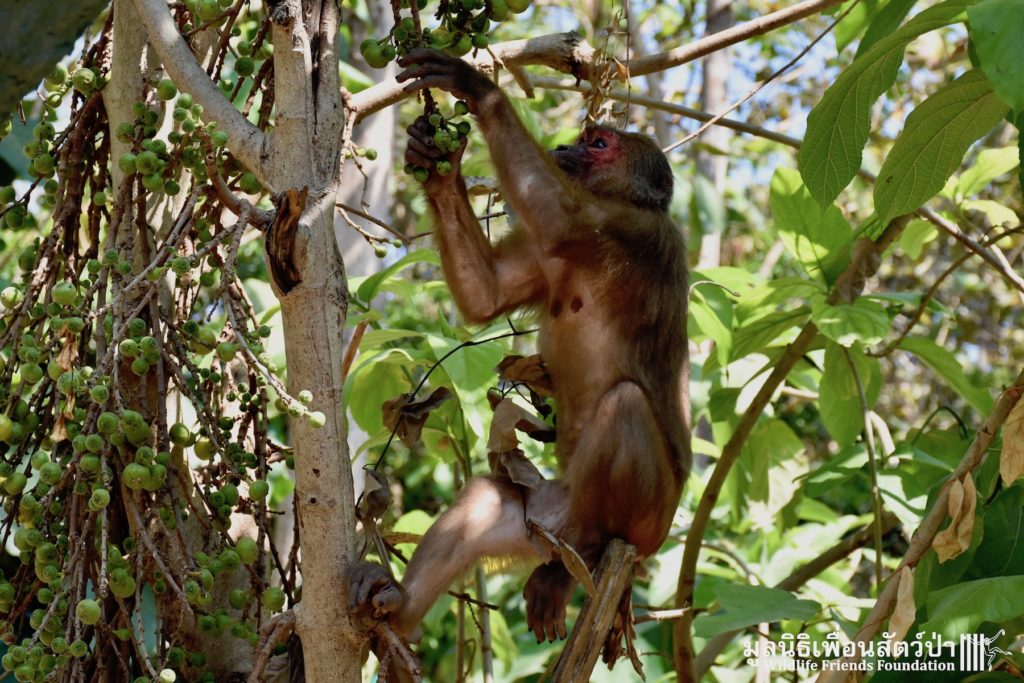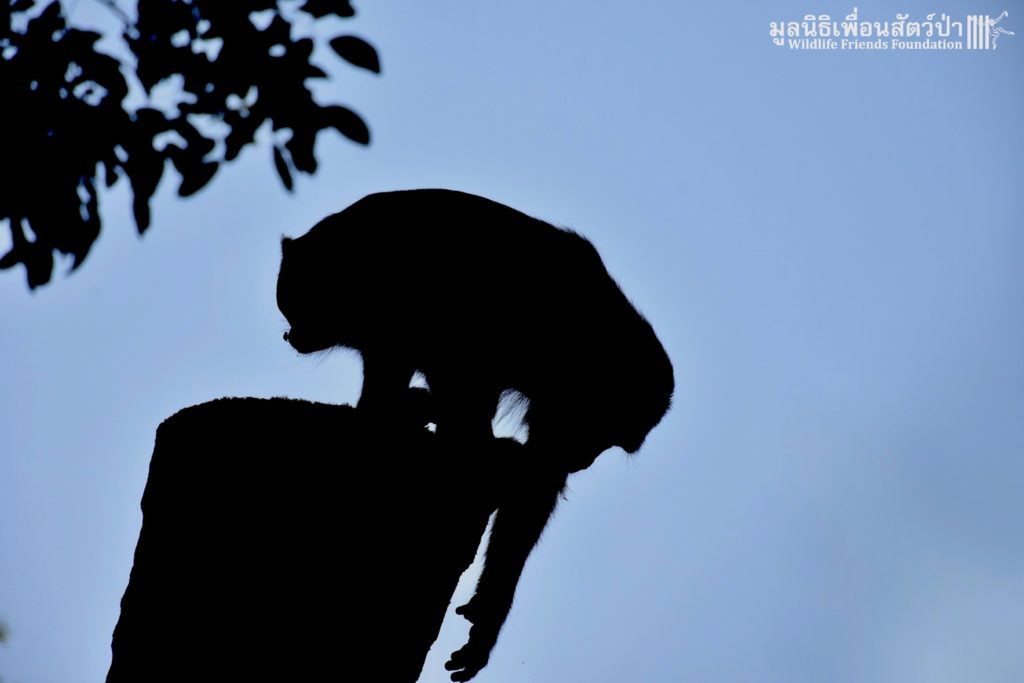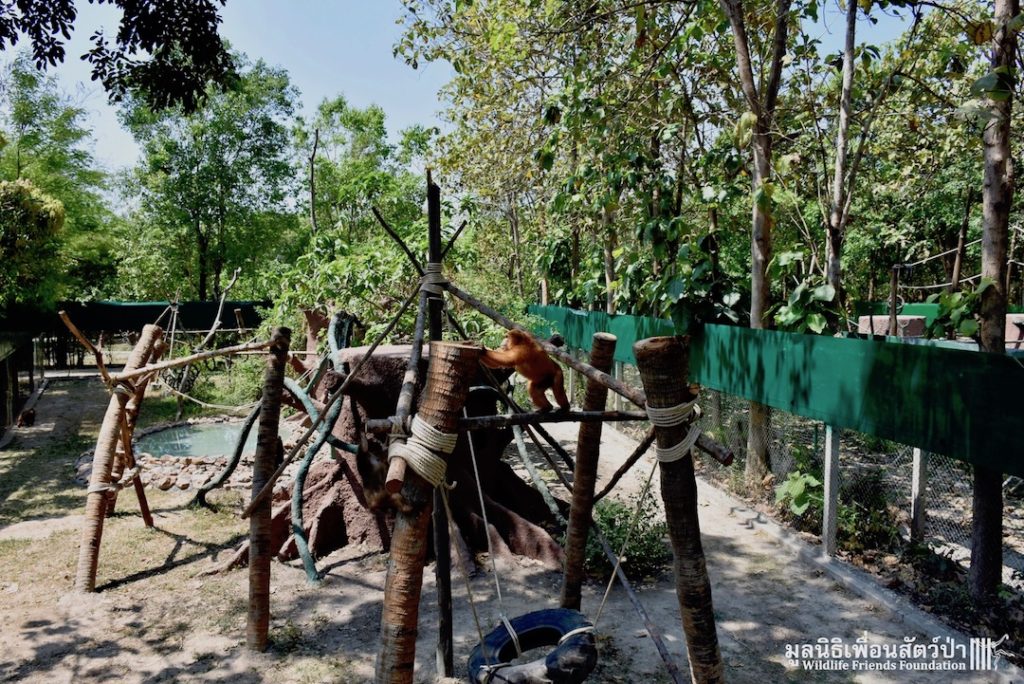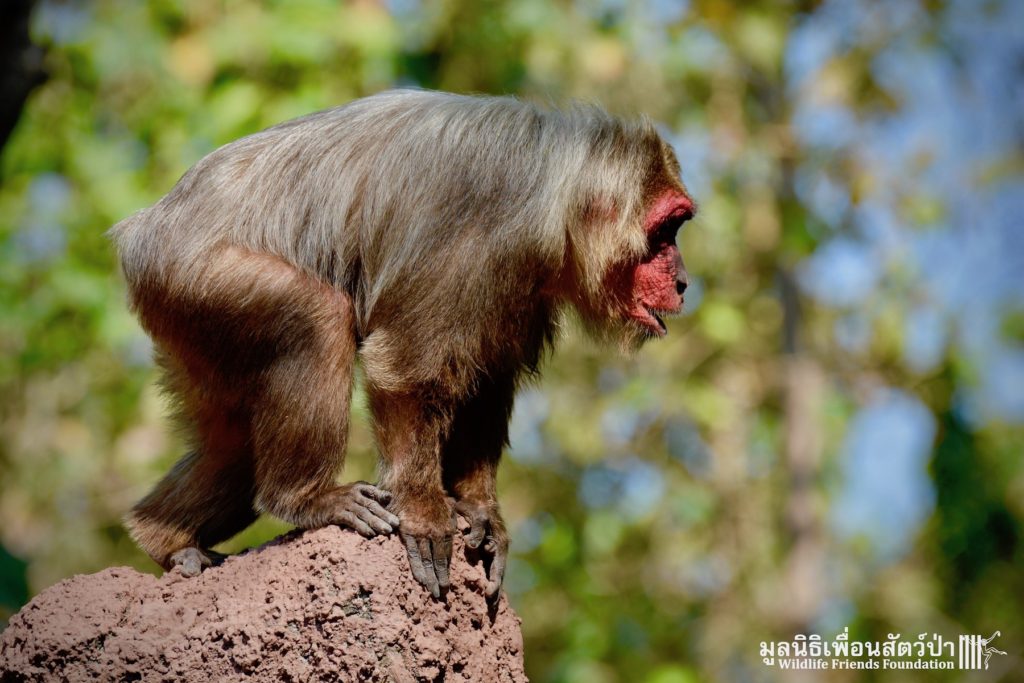We are pleased to announce the rescue and safe arrival of Heart, a white-handed gibbon who is more than 40 years old and missing her lower arms and hands.
Macaques on the Move…
Here at the WFFT Wildlife Rescue Centre in Thailand we continue to strive to provide the best captive environments for our permanent residents, many of which are rescued macaques. This involves creating new exciting captive habitats for the animals in our care. In recent weeks we have been refurbishing some of the original open top macaque fields that still provide great homes for mostly ex-pet macaques. Yesterday one of the fields was completed enabling us to move a troop of stump-tailed macaques (Macaca arctoides), ‘Dollars Troop’ made up of young macaques Dollar and Yaya, and elderly macaques John and Jeaw. They have been exploring their wonderfully enrichment new environment, and to all our surprise 23-year-old John seems to have a new lease of life, and is loving all the new climbing structures.
Why not adopt one of these macaques and help us continue to care for them? See animal adoptions options here www.wfft.org/sponsorships
The stump-tailed macaque is classified as Vulnerable (VU) on the IUCN Red List, it is threatened throughout large parts of its range and has become locally extinct in places where it used to thrive. In most areas, habitat destruction and hunting are the primary reasons for the decline of this species. Logging and timber extraction pose serious threats and are responsible for much of the loss of stump-tailed macaque habitat, while other habitat disturbances such as forest fragmentation and deliberately started fires also have detrimental effects. The stump-tailed macaque is also extensively hunted in many regions for meat or use in traditional medicines and remedies,and traded as live animals as pets.
They are frugivorous-omnivores and a significant part of their diet is devoted to fruits. They also eat seeds, flowers, leaves, roots, freshwater crabs, frogs, birds, bird eggs, and insects. “Hindquarter presentation” is the most common behavioral gesture seen among stump-tailed macaques and is displayed by subordinates to appease dominants. Other submissive signals include “bared-teeth,” “lip-smack,” “teeth-chatter,” and “present-arm,” in which one arm is put directly in front of the face of the dominant individual to be bitten.


